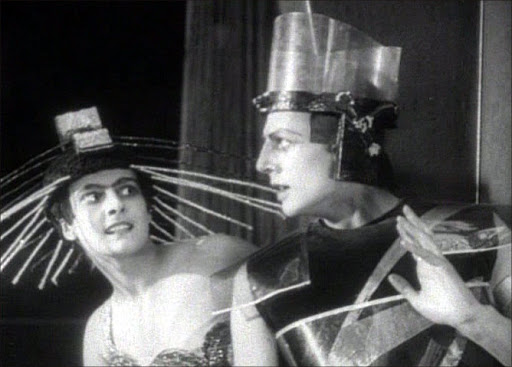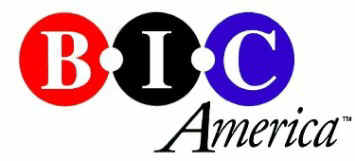 The 14th Annual Silent Film Festival
The 14th Annual Silent Film Festival
July 10-12, 2009, at the Historic Castro Theater. As I stated elsewhere, this is one of the finest festival events that I attend in the Bay Area. Though there were moments that were nearly out-of-body experiences, there were a number of truly exceptional moments, too.
As I stated elsewhere, this is one of the finest festival events that I attend in the Bay Area. Though there were moments that were nearly out-of-body experiences, there were a number of truly exceptional moments, too. Opening night began with THE GAUCHO (dir. F. Richard Jones, US, 1927, 120 mins.), a star vehicle for Douglas Fairbanks and Lupe Velez. The film was introduced by Jerry Vance and Tony Manietta, who provided some nifty technical background as well as much appreciated gossip! Apparently the casting of Mary Pickford in the small role of The Madonna had something to do with retribution for some on-set attraction between her then husband Fairbanks and Velez. Her scene itself was of some extra interest as it was filmed in two-strip technicolor with added effects to create a halo. They screened recently discovered tests of that scene as what is included in the present print is black and white.
Opening night began with THE GAUCHO (dir. F. Richard Jones, US, 1927, 120 mins.), a star vehicle for Douglas Fairbanks and Lupe Velez. The film was introduced by Jerry Vance and Tony Manietta, who provided some nifty technical background as well as much appreciated gossip! Apparently the casting of Mary Pickford in the small role of The Madonna had something to do with retribution for some on-set attraction between her then husband Fairbanks and Velez. Her scene itself was of some extra interest as it was filmed in two-strip technicolor with added effects to create a halo. They screened recently discovered tests of that scene as what is included in the present print is black and white.
Anyway, the film itself could be seen as a typical tango-and-horse-tricks feel good flick, with the ever so dashing Douglas Fairbanks, chewing away at the scenery, whenever possible, even if it is the simple lighting of a cigarette. Lupe Velez does a decent job of keeping up, as did the accompanying Mont Alto Motion Picture Orchestra, but it is Fairbanks' film, through and through. Lupe Velez would be given a greater chance to impress in the closing night film, LADY OF THE PAVEMENTS (dir. D.W. Griffith, US, 1929, 120 mins.). Here, Ms. Velez plays a cabaret singer and prostitute, who is hired to take down a visiting Prussian Count (William Boyd), by posing as a "lady" to whom he will fall in love. The hiring is done by a Countess, who is EVILLY and deliciously portrayed by Jetta Goudal. The film owes what success it has to the interplay between our leading ladies. According to the introduction by Russell Merritt, there is about as much written about the off screen feud between Velez and Goudal
Lupe Velez would be given a greater chance to impress in the closing night film, LADY OF THE PAVEMENTS (dir. D.W. Griffith, US, 1929, 120 mins.). Here, Ms. Velez plays a cabaret singer and prostitute, who is hired to take down a visiting Prussian Count (William Boyd), by posing as a "lady" to whom he will fall in love. The hiring is done by a Countess, who is EVILLY and deliciously portrayed by Jetta Goudal. The film owes what success it has to the interplay between our leading ladies. According to the introduction by Russell Merritt, there is about as much written about the off screen feud between Velez and Goudal  as there is about the technical demands that the emergence of sound made on director Griffith. D.W. Griffith introduced five songs within the film, that were recorded to be played in synch during the screenings. At this screening, the film was accompanied by Donald Sosin on piano and sung by Joanna Seaton. Griffith's attempt to introduce the human voice felt a bit wedged in and reluctant. However, the final song was effective.
as there is about the technical demands that the emergence of sound made on director Griffith. D.W. Griffith introduced five songs within the film, that were recorded to be played in synch during the screenings. At this screening, the film was accompanied by Donald Sosin on piano and sung by Joanna Seaton. Griffith's attempt to introduce the human voice felt a bit wedged in and reluctant. However, the final song was effective.  At the opposite end of the accessibility scale, though I enjoyed it quite a bit, was THE FALL OF THE HOUSE OF USHER (La chute de la maison Usher) (dir. Jean Epstein, France, 1928). Acting Artistic Director, Anita Monga, introduced the feature, along with an American made short version of the same subject, with just the right amount of surreal haziness. (The short was a last minute substitution for the scheduled print of THE BARBER'S QUEER CUSTOMER.) The film was fabulously accompanied by Stephen Horne, who took the the neo-expressionistic visuals on screen and added his impressionistic, if not improvised talents to it, and lead the audience into the dream that Poe had written. I loved the experience, yet place it here amongst the "GREATS of the fest" as it was almost too gauzy, too much of a dream,
At the opposite end of the accessibility scale, though I enjoyed it quite a bit, was THE FALL OF THE HOUSE OF USHER (La chute de la maison Usher) (dir. Jean Epstein, France, 1928). Acting Artistic Director, Anita Monga, introduced the feature, along with an American made short version of the same subject, with just the right amount of surreal haziness. (The short was a last minute substitution for the scheduled print of THE BARBER'S QUEER CUSTOMER.) The film was fabulously accompanied by Stephen Horne, who took the the neo-expressionistic visuals on screen and added his impressionistic, if not improvised talents to it, and lead the audience into the dream that Poe had written. I loved the experience, yet place it here amongst the "GREATS of the fest" as it was almost too gauzy, too much of a dream, that I had a trouble holding on to the path of the film and just had to struggle let it take me on its surreal path. (Luis Bunuel worked on the film, too, though he was fired after making remarks on set.) It was also scheduled after the W.C. Fields piece, so it was a bit jarring to experience.
 The other film that could be considered avant-garde was AELITA, QUEEN OF MARS (dir. Jakov Protazanov, USSR, 1924, 125 mins.), which was appropriately introduced by the programmer of MIDNIGHT FOR MANIACS, Jesse Hawthorne Ficks and accompanied by the Wurlizter god, Dennis James, who also played the Theremin, and Mark Goldstein on Buchla Lightning. In the spirit of full disclosure, I couldn't finish it. As visually arresting as the Mars sequences were, designed by Alexandra Exter, the earthbound sequences were bogged down with proletariat plot that went beyond propoganda, and so dominated the first half of the film (i.e. what I saw), that I just saw no need to stay.
The other film that could be considered avant-garde was AELITA, QUEEN OF MARS (dir. Jakov Protazanov, USSR, 1924, 125 mins.), which was appropriately introduced by the programmer of MIDNIGHT FOR MANIACS, Jesse Hawthorne Ficks and accompanied by the Wurlizter god, Dennis James, who also played the Theremin, and Mark Goldstein on Buchla Lightning. In the spirit of full disclosure, I couldn't finish it. As visually arresting as the Mars sequences were, designed by Alexandra Exter, the earthbound sequences were bogged down with proletariat plot that went beyond propoganda, and so dominated the first half of the film (i.e. what I saw), that I just saw no need to stay.  I heard that the Mars sequences did dominate further towards the end, however, there is no question that the artistic significance was Exter's deisgn work and not necessarily the filmmaking.
I heard that the Mars sequences did dominate further towards the end, however, there is no question that the artistic significance was Exter's deisgn work and not necessarily the filmmaking.  Maxxxxx says
Maxxxxx says
re Silent Film Festivals: "....."
You can contact Maxxxxx or myself here: JayCBird@AOL.COM
Thursday, July 16, 2009
San Francisco Silent Film Festival, 2009 - Recapping the Good Moments!
Category:
Film Festivals,
Movies
Subscribe to:
Post Comments (Atom)



















 Pseudomyxoma Peritonei (Huh???)
Pseudomyxoma Peritonei (Huh???) Fluidtoons! By Brett W. Thompson!
Fluidtoons! By Brett W. Thompson!
 THE EVENING CLASS (by Michael Guillen)
THE EVENING CLASS (by Michael Guillen) Television Without Pity!
Television Without Pity! John Rutherford's Blog for COLT Studio Group
John Rutherford's Blog for COLT Studio Group



No comments:
Post a Comment